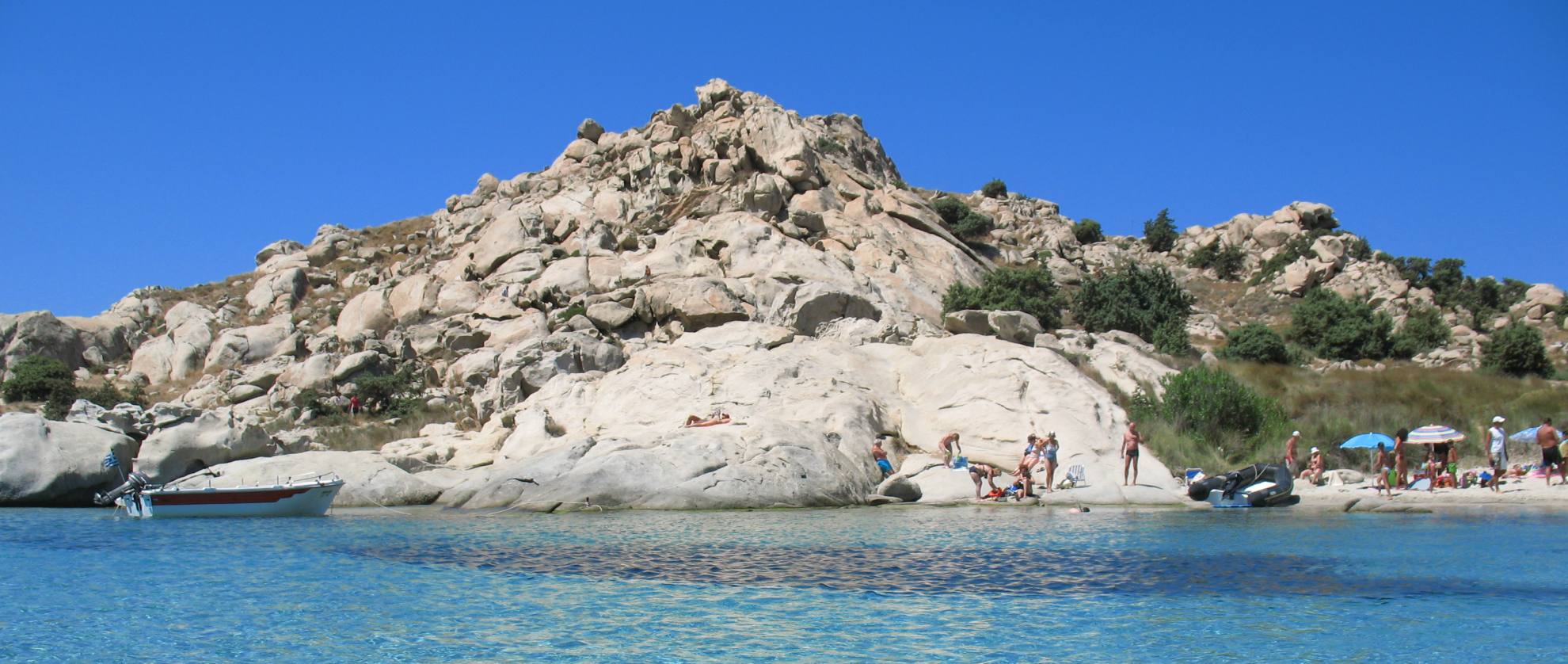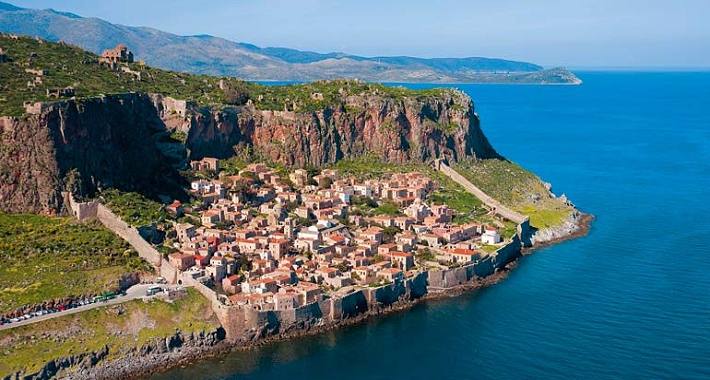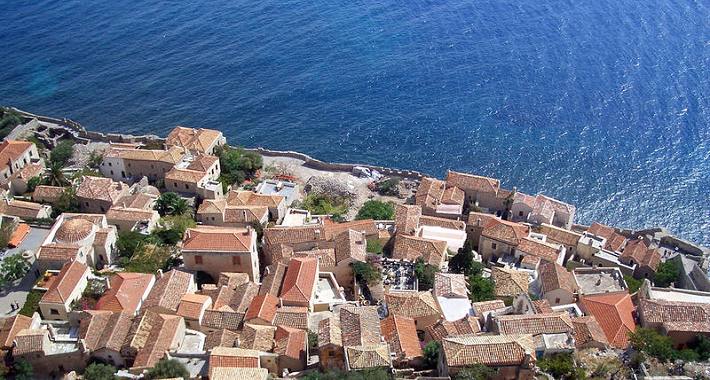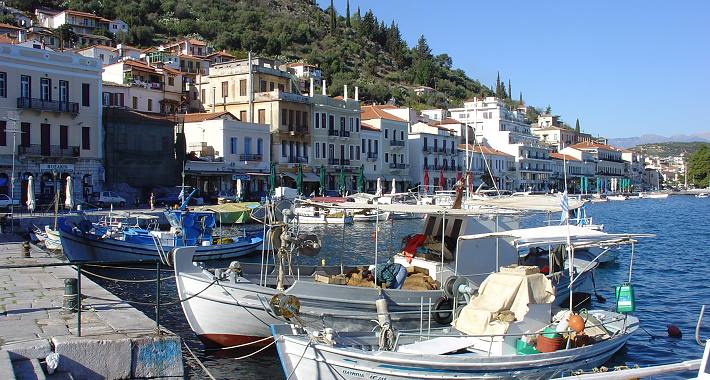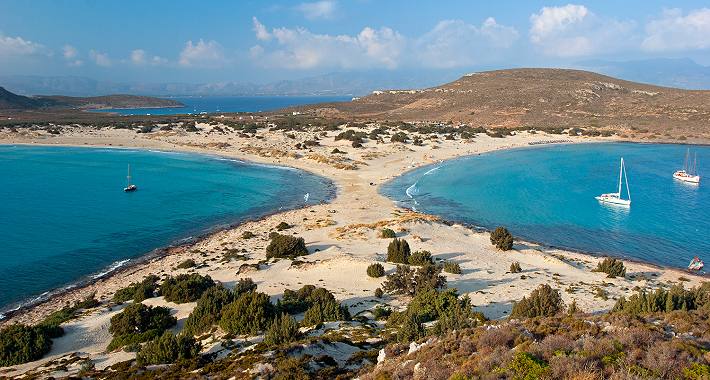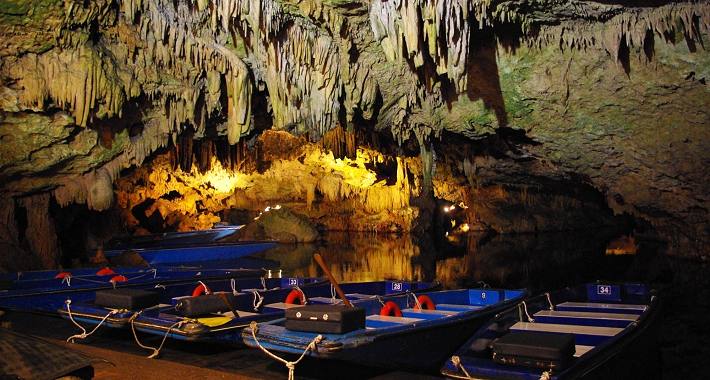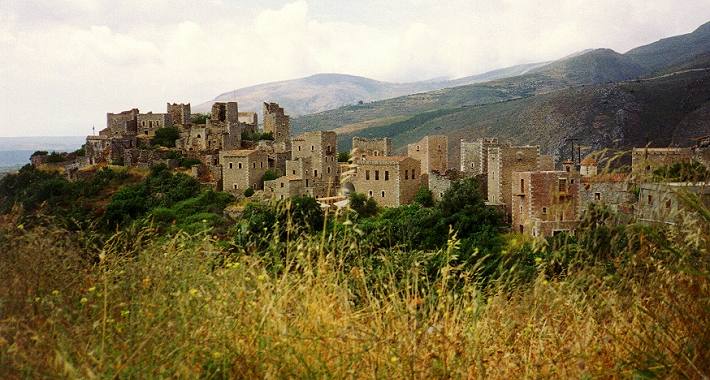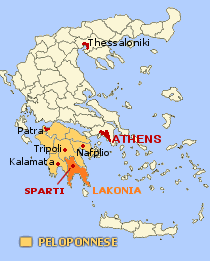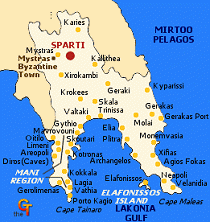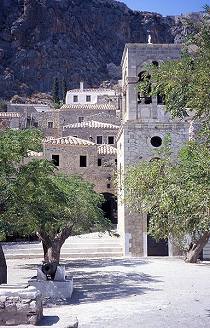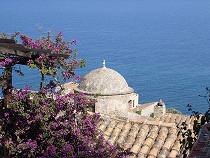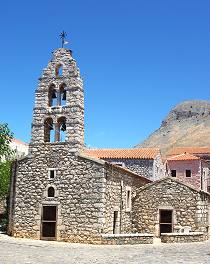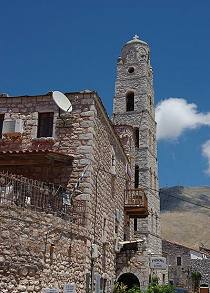Lakonia » Mystras, the Byzantine city-state
More about Lakonia
HotelsLakonia
The past
Things to see and do
Mystras, the Byzantine city-state
Monemvasia
Biotopes - Vatika district
Mani Region
Mani
The Towers of Mani
Areopoli
Diros and the Caves
Gerolimenas
Gythio
Oitilo (Itilo)
Vathia
Places in Lakonia
Archangelos and Plitra
Nea Monemvasia
Neapoli
Neapoli area - Vatika
Elafonissos Island
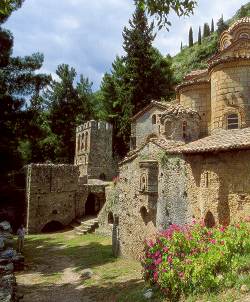
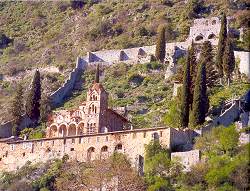
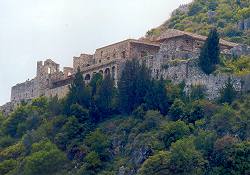
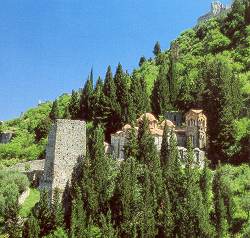
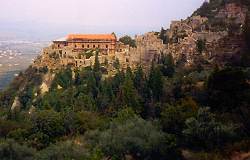
Magnificent, spectacular a glorious place, Mystras (5 Km north-west of Sparti) is one of the most exciting cities in Peloponnese. Standing still in time, the dead city lies on the slope of the sheer, strange hill with the fortress at its top.
The whole of Mystras is an open-air museum. A reminder of glorious era of power and culture.
Its fortifications and churches, its palaces and mansions, its roads and fountains, charm thousands of visitors daily and offers them valuable insights in the evolution and culture of the Byzantines.
For two centuries Mistras was at the forefront of developments and had a brilliant history full of glory, splendour and political, social and cultural contributions. Its story begins in the mid-13th century when the Franks were dominant in the Peloponnese. In 1249 Villehardouin II built an impregnable fortress at the top of a hill called Mistras or Mizithras. Ten years later Villehardouin found himself a prisoner of the Byzantine Emperor Michael Paleologus and bought his freedom by handing over the fortresses of Mistras, Monemvasia and Mani. Mistras offered security, so that the inhabitants of neighbouring Lacedaemonia, as Sparti was then called, made their homes on the slopes surrounding the fortress.
The settlement and the Hora (town) were protected by a wall, but the new houses were built outside the enclosure. Another wall protected the new settlement, Kato Hora. The strategoi (generals) governed the town, and as of 1308, when the seat of the Diocese had been moved to Lacedaemonia.
Mistras became in the mid-14th century the capital of the Peloponnese and the seat of the Seignioly (Despotate) of the Moreas, with a ruler or despot who enjoyed a tenure for life.
Sightseeing
The Palaces
The palaces of the despots of Morea dominate Mistras from their rocky foundations
in the centre of Ano Hora where the
Monemvasia gate leads from Kato Hora.
It is a spectacular complex, comprised of buildings built at different times.
The first, the
"mansion of the Cantakuzenoi", was constructed in the first years, perhaps by the Franks.
The second edifice dates from the same
period (1250-1350).
The third, a four-storey building, was erected between 1350 and 1400, as was the fourth, a two-storey mansion
which was the residence of the despot.
The fifth building (1400-1450) was the palace of the Paleologoi.
Its length is 38 m. and its
width 12 m.
The first storey was intended for the departments of the Seigniory.
The second was the throne hall. The abandoned
palaces constitute an important attraction for the modern visitor.
After their restoration, they are a vivid reminder of an era that has left
an indelible mark on history. As is the grand square before them,
the site of official displays during the days of Mistras' glory and a
market in later years, when the town was a busy commercial centre.
The Fortress
At the top of the hill, at an altitude of 620 m., the
fortress was built in 1249 by Villehardouin II. In later years
many improvements and additions were made. It has two
yards, with a gate for each. In the outer yard is a sturdy
circular tower, a cistern and the ruins of buildings dating
from the years of Turkish occupation. In the inner yard is
the abandoned residence of the governor, a cistern, a
circular tower and a small church, perhaps the oldest
edifice in Mistras.
The Walls
There are two lines of fortification in Mistras. The
inner wall, which was constructed to protect the first
inhabitants, encloses the Palaces of the Despots. The
outer wall was constructed later, to protect the inhabitants
of Kato Hora. The fortifications are complemented by
square-shaped towers.
The Gates
Mistras had three gates: the fortified Gate in the outer
wall -today the main entrance for visitors, at the point
where the road ends- the Upper Gate (Fortress Gate) and
the Gate of Nafplion, high up on the northern side of the
inner wall, fortified with square and circular towers and
with an iron portal that could be lowered and lifted.
Internal communication between Kato and Ano Hora was
through the Gate of Monemvasia, also known as
Sideroporta ("Iron Gate").
The Mansions and Houses
History and daily life in Mistras emerge from the
centuries-old winding alleys and its mansions and
houses. Old or more recent, most have retained their initial
form and constitute a valuable source of information
regarding architecture, the manner of construction and
daily life in the 13th century and later. The most significant
-because better preserved- are the Laskaris mansion near
Marmara, the Frangopoulos mansion between the
Perivleptos and the Pantanassa, and the Palataki
near Agios Nikolaos in Pano Hora; the various
stages of its construction place it between the second half
of the 13th and the first years of the 15th century.
The Churches
More than 25 churches contribute with their architecture and history to
the special character Mystras. Agios Dimitrios, Evangelistria, Agioi Theodoroi,
Panagia Odigitra, The Perivlepos, Pantanassa, Agia Sofia.
The Byzantine Museum
The museum of Mystras is housed in the two-storeyed building at the west wing
of the north courtyard of the Cathedral of Agios Demetrios.
It was founded in 1951 and since then its collections have been considerably enriched.
It contains collections of Byzantine sculpture, jewellery, pottery, coins, fragments of wall paintings, portable post-Byzantine icons, and pieces of fabric.
Tel: +30 27310 83377
More about Lakonia
Mani Region » Mani • The Towers of Mani • Areopoli • Diros and the Caves • Gerolimenas • Gythio • Oitilo (Itilo) • Vathia
Places in Lakonia » Archangelos and Plitra • Nea Monemvasia and the surroundings • Neapoli • Neapoli's surrounding area - Vatika • Elafonissos Island.
